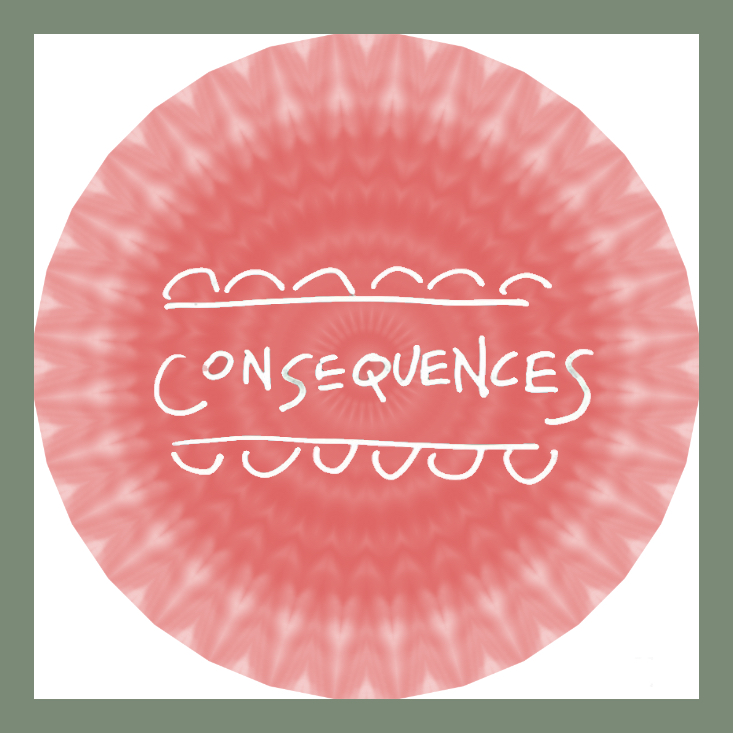Whether you’re new here or have been exploring with me for a while, this post is part of a deeper dive into The Healing Elements—my system based on the idea that each of us carries an inner expert. When we learn to observe our thoughts, beliefs, emotions, and the life patterns they create, we begin to tap into our own healing potential. Each “Element” offers an invitation. This one is about Consequences.
Unexamined thoughts, beliefs, and emotions have consequences.
Whether we examine them or not, they shape our lives. But the ones we don’t examine? They can quietly take over—like weeds spreading through a garden while we weren’t looking.
Take the belief, “Being alone is terrible.” The consequence might be constant restlessness, painful loneliness, or clinging to connections that don’t truly nourish you. That belief is the seed. Your experience is the harvest.
But swap that out for “Being alone is healing,” and the consequences begin to shift. Solitude might start to feel spacious, restorative—even sacred. You may make gentler choices, slow down, or deepen your sense of self-trust. That belief is a seed that grows into an entirely different plant.
In the Healing Elements system, those plants are called Consequences—the third Marker in the A–O framework of inner change.
My Story
When I tended a big vegetable garden, I learned early: every seed can sprout. Some give us juicy tomatoes. Some turn into bindweed or creeping bellflower—pretty at first, but quick to take over and crowd out what we meant to grow.
It’s the same with our inner lives.
Auto-thoughts, Beliefs, and Emotions act like seeds. And when left alone, they germinate—whether we want them to or not.
Some of my weedy consequences included cancer, burnout, and emotional patterns like irritability, hopelessness, and joylessness. Much of this grew from a belief I absorbed early on: Stay small. In my family, especially with my mother, there was a quiet message that our value came from reflecting her—her needs, her identity. Real self-expression often felt unwelcome, even dangerous.
That blurred my sense of where I ended and others began. Later, as a therapist, I repeated the pattern—not out of neglect, but because deeply feeling with clients seemed helpful. Still, I didn’t know where empathy stopped and enmeshment began. That confusion created real consequences over time—none of them sustainable.
My Auto-thoughts back then boiled down to “Shut up.” The Belief beneath it? “It’s not safe to express myself.”
The Consequence was a life that stayed small: quieter, dimmer, and more limited than it needed to be.
An Internal Equation:
A (Auto-thought) + B (Belief) = C (Consequence)
(We’re keeping it simple for now—Emotions also play a major role, which we’ll explore next.)
Each Consequence lines up with what came before—even if we never consciously chose that thought or belief.
What Is a Consequence?
A consequence is simply a result. In this work, it’s what grows—emotionally, physically, relationally—from the soil of your Auto-thoughts and Beliefs (and, soon, Emotions).
Some are nourishing. Others are painful. But none are random.
Some people say our inner world shapes our outer world—and honestly, it does seem that way. Core beliefs may carry a kind of vibration, an energetic signal that subtly attracts matching experiences. Life often echoes that signal back—in the people, patterns, and challenges that reinforce what we already believe.
Even physics brushes against this idea. In the double-slit experiment, particles behave differently when they’re being observed—as if attention itself nudges possibility into form. It doesn’t prove anything about beliefs, but it hints at something compelling: that consciousness participates in what becomes real.
That’s why the garden metaphor works so well. Sometimes seeds blow in from past experiences or habits. But once they take root, we can respond: nurture what we want, compost what we don’t, and consciously replant.
Why This Matters
Here’s the good news: cause and effect aren’t fixed.
You can start with a Consequence and trace it back to the seed.
Or start with the seed—an Auto-thought or Belief—and imagine what it might grow into.
Either way, you’re shaping the inner garden.
This is healing work. And it’s powerful.
Try This
- Revisit the Auto-thoughts and Beliefs you’ve explored so far.
- Ask yourself:
- If this thought or belief were a seed, what might it be growing in my life right now?
- Are there consequences—emotional, physical, relational—that feel connected?
- Notice what’s nourishing… and what may need to be pulled and composted.
What’s Next
Next up in the Healing Elements series: Emotions—the “E” in our A–B–C–D–E path. Emotions aren’t just reactions; they’re the energy that gives Beliefs weight and fuels the Consequences that follow.
But for now, let this be enough.
You’re not late to the garden.
You’re right on time.





